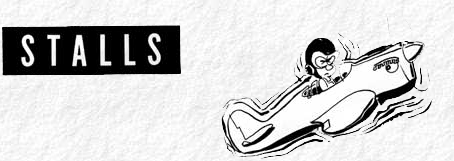

|
The stalling speed of the P40 is 'approximately 84 mph with wheels and flaps clown, about 90 mph with wheels and flaps up, (These speeds vary slightly among individual airplanes.) But you can stall the P-40 at any speed, in any position, if you don't coordinate your controls properly. If a high-speed stall develops it usually snaps the airplane. Unless you ease back pressure on the stick immediately, the plane goes into a spin. Avoid high-speed stalls. They are dangerous to you and to the airplane. |
Low-speed stalls, on the other hand, are as safe as they were in your AT-6 and are an important part of your P-40 training. Learn lowspeed stalls with wheels and flaps up, wheels and flaps down, only wheels down and only flaps down. Low-speed stalls help you to get the feel of your airplane. If you stall in an unusual position (like the top of a loop or Immelmann) retard the throttle, neutralize the stick and rudder, and wait until the nose is well down before starting recovery. Do not practice stalls below 8000 feet; you may not have room to recover. |


